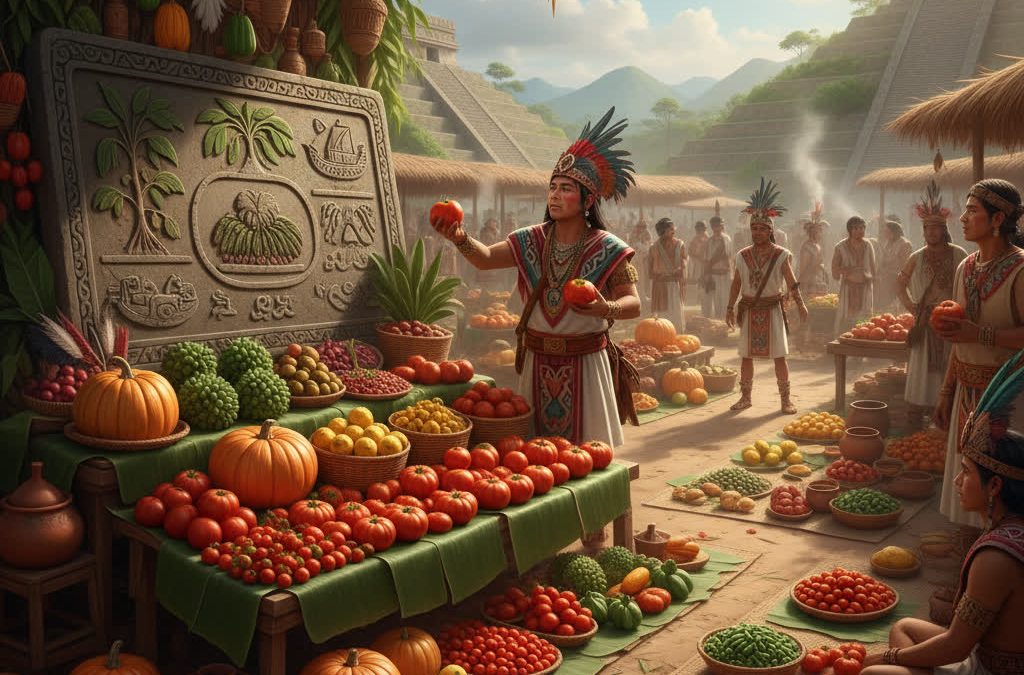Imagine a vibrant, bustling marketplace in ancient Aztec Mesoamerica, teeming with colorful fruits and vegetables. Among them, the humble tomato stands out—not just for its bright red hue but for its fascinating journey from wild plant to culinary staple. Today, we’re taking a deep dive into the captivating origins of tomatoes in South America, uncovering how they became an integral part of our global cuisine and the cultural stories woven into their history.
The Wild Beginnings of Tomatoes
Long before tomatoes graced the plates of modern kitchens, they thrived wild in the diverse landscapes of South America. Native to regions that now encompass modern-day Peru, Ecuador, and northern Chile, these plants were part of the lush, tropical ecosystems. Wild tomatoes are generally small and often resemble cherry tomatoes, but their genetic roots stretch back thousands of years.
Scientists believe that the domestication of tomatoes began in the Andean region, where indigenous peoples first cultivated and selectively bred these plants for desirable traits like size, flavor, and yield. Their natural mutation and adaptation over generations laid the foundation for the varieties we know today.
The Role of the Aztecs and Indigenous Cultures
The story of tomatoes is deeply intertwined with the Aztecs, one of the most prominent indigenous civilizations of Mesoamerica. For the Aztecs, tomatoes were more than just food—they held cultural and medicinal significance.
- Dietary staple: Tomatoes became an essential component of their cuisine, often used in salsas, stews, and beverages.
- Symbolism: The bright red fruit was associated with vitality and life.
- Trade and cultivation: The Aztecs cultivated tomatoes extensively, selecting for larger and more flavorful specimens, which they considered valuable commodities.
Archaeological findings, including pottery and carvings, depict the importance of tomatoes in Aztec society, illustrating their role beyond mere sustenance.
Fun Facts & Anecdotes About Tomatoes
- Did you know? Tomatoes are technically a fruit, classified as berries botanically.
- Ancient belief: Some Europeans believed that eating tomatoes could cause health issues, which delayed their acceptance.
- Color varieties: While red is the most common, tomatoes also come in yellow, orange, purple, and striped varieties, showcasing their genetic diversity.
- Celebrity chef favorite: Tomatoes are often considered the “queen of vegetables” in culinary circles for their flavor and versatility.
The Spread of Tomatoes to the World
When Spanish explorers arrived in the 15th and 16th centuries, they encountered the tomato in the New World. Recognizing its potential, they brought it back to Europe, where initial reactions ranged from curiosity to suspicion—because many Europeans believed tomatoes were poisonous due to their relation to deadly nightshades.
Over time, tomatoes gained popularity across Europe, especially in Mediterranean countries like Italy and Spain. Their culinary versatility and vibrant color made them a favorite ingredient, eventually spreading to Africa, Asia, and beyond.
How Tomatoes Became Global Cuisine Icons
Today, tomatoes are a cornerstone of countless dishes worldwide. From Italian pasta sauces and American ketchup to Indian curries and Middle Eastern salads, their adaptability and flavor have cemented their status.
By the 19th century, breeding programs and agricultural innovations led to a proliferation of tomato varieties, including large slicing tomatoes, cherry tomatoes, and heirlooms. The global love for this fruit is a testament to its rich history and cultural significance.
Conclusion: Celebrating a Fruit with a Rich Heritage
The journey of the tomato—from its wild origins in South America to its status as a beloved global ingredient—is a story of cultural exchange, agricultural innovation, and culinary creativity. Recognizing the role of indigenous peoples like the Aztecs gives us a deeper appreciation for this vibrant fruit and its significance beyond the dinner plate. Next time you slice into a ripe tomato or savor a bowl of salsa, remember the centuries of history and culture that have shaped this humble yet extraordinary fruit. Tomatoes are not just food—they’re a living testament to the rich heritage of South America and the ingenuity of those who cultivated them long before we did.

